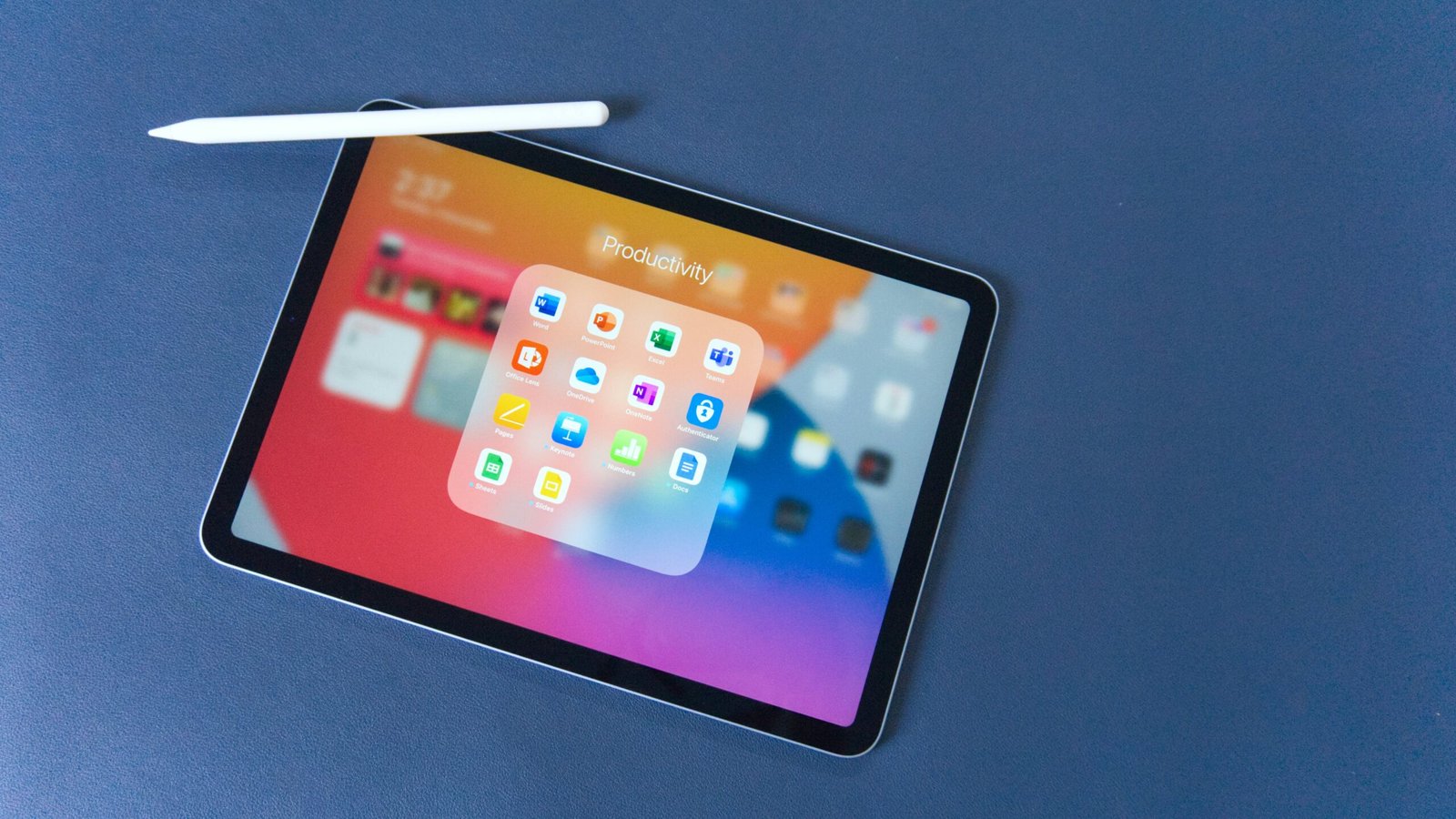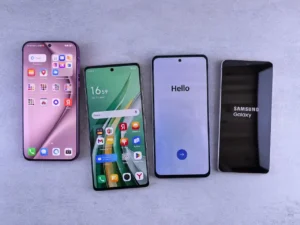Introduction to Google Assistant
Google Assistant represents a significant advancement in the field of voice recognition and artificial intelligence, enhancing user interaction with Android devices. Its primary purpose is to assist users in managing tasks, obtaining information, and connecting with applications through voice commands, thereby facilitating a more seamless mobile experience. This innovative tool has evolved from earlier voice recognition technologies, reflecting ongoing improvements in natural language processing and machine learning. As a result, Google Assistant can understand, process, and respond to complex questions and commands with remarkable accuracy.
One of the defining features of Google Assistant is its integration with various applications and services on Android devices. Users can access it by using their voice with phrases like “Hey Google” or “OK Google,” enabling quick interactions without needing to navigate menus manually. This hands-free functionality is particularly advantageous for users who are multitasking or require assistance while driving, as it allows for a safer and more efficient way to operate smartphones.
Google Assistant is not limited to basic commands. It can set reminders, send messages, play music, and provide real-time updates on weather, news, or traffic. Additionally, it can control smart home devices, allowing users to adjust settings and automate their living spaces conveniently. The role of Google Assistant in enhancing user experience cannot be overstated, as it promotes a more intuitive approach to interacting with technology, making smartphones not just tools, but adaptable companions tailored to individual user needs.
Overall, as voice assistants continue to grow in popularity, Google Assistant stands out due to its comprehensive functionality and deep integration within the Android ecosystem. This positions it as a critical component in the ongoing evolution of user-device interaction.
Getting Started: Setting Up Google Assistant
Setting up Google Assistant on your Android device is the first vital step towards enhancing your interaction with technology. To begin this process, ensure that your device is running on Android 5.0 or higher, as it is a prerequisite for enabling Google Assistant. Start by locating the Google app on your device. If it is not already installed, you can easily download it from the Google Play Store. Once the app is ready, launch it to initiate the setup.
The next stage involves enabling Google Assistant. Open the Google app, tap on your profile picture or the “More” option at the bottom right, and navigate to the “Settings” menu. In the Settings, select “Google Assistant” and then tap on “General.” Here, you will find an option to toggle Google Assistant on. Once you do this, the Assistant will be activated and ready to support your requests.
For a more personalized experience, configuring Voice Match is essential. Voice Match enables Google Assistant to recognize your voice, allowing for tailored responses. In the Google Assistant settings, locate the “Voice Match” option. Follow the on-screen instructions to teach Google Assistant your unique voice pattern. This feature also provides an added layer of security, as it enables Google Assistant to differentiate between users, ensuring that your personal information remains private.
Additionally, adjusting settings to optimize performance is crucial for an effective experience. Within the Assistant settings, explore options such as “Personalization,” “Popular Assistant Actions,” and “Routines.” Customizing these features will streamline your interactions. Optimizing Google Assistant to suit your needs will improve its responsiveness, making technology more accessible and efficient in managing your daily tasks.
Mastering Voice Commands
One of the most powerful features of Google Assistant on Android devices is its ability to respond to voice commands, enabling users to interact seamlessly with their smartphones. By mastering voice commands, users can enhance their productivity, retrieve information quickly, and even enjoy entertaining interactions.
Voice commands can be broadly categorized into three main areas: daily tasks, information retrieval, and fun interactions. For daily tasks, users can issue commands such as “Set a timer for 10 minutes,” or “Turn off the living room lights,” tailoring the Google Assistant to manage their routine activities effectively. This functionality allows for hands-free operation, particularly beneficial in situations where manual input is inconvenient.
In terms of information retrieval, queries can range widely. Users might say, “What’s the weather like today?” or “Find me a recipe for chocolate cake.” These commands utilize the Assistant’s ability to search the web and provide contextually relevant answers in an instant. By articulating specific questions, users can receive tailored responses, allowing them to stay informed without delving into multiple applications.
Moreover, fun interactions offer a lighter approach to using Google Assistant. Users might ask, “Tell me a joke,” or “What’s a fun fact?” These commands can showcase the Assistant’s playful side, making the user experience more enjoyable. Furthermore, utilizing commands related to music, such as “Play my favorite playlist,” enhances entertainment options seamlessly integrated into the Google Assistant’s capabilities.
In summary, the mastery of voice commands can significantly improve user experience with Google Assistant on Android devices. By employing commands for daily tasks, retrieving information quickly, and enjoying fun interactions, users can leverage the Assistant’s full potential. Understanding how to utilize these voice commands effectively is essential in creating a more efficient and engaging interaction with technology.
Google Assistant for Smart Home Integration
Google Assistant has emerged as a leading force in the realm of smart home integration, enabling users to control various devices through simple voice commands. It is compatible with a wide range of smart home devices, including lights, thermostats, security cameras, and smart speakers. This compatibility allows homeowners to create a cohesive smart home ecosystem that can enhance convenience, efficiency, and security.
Many major brands in the smart home industry, such as Philips Hue, Nest, and August, offer devices that seamlessly integrate with Google Assistant. By linking these devices to the Google Home app, users can easily manage their smart home environment from a centralized interface. This integration means that tasks such as adjusting the thermostat or turning off the lights can be accomplished with just a few spoken words, significantly simplifying daily routines.
Voice commands are the primary means of interaction for Google Assistant with smart home devices. For instance, a user can say, “Hey Google, turn on the living room lights,” to activate compatible lights effortlessly. These commands can even be customized for specific preferences and functions. Moreover, Google Assistant supports routines, which are a series of actions triggered by a single command. Users can program a routine that locks the doors, turns off the lights, and adjusts the thermostat all at once when they say, “Hey Google, good night.” This feature illustrates an effective use of automation, managing multiple devices simultaneously to create an energy-efficient and secure home environment.
For those seeking to enhance their smart home experience, exploring Google Assistant’s compatibility with a wider array of devices offers more control and customization. Smart home integration not only elevates convenience but also contributes to a more intelligent living space, making it a worthwhile consideration for any tech-savvy homeowner.
Boosting Productivity with Google Assistant
In the fast-paced world we live in today, utilizing technology effectively is crucial for enhancing productivity. Google Assistant, embedded within Android devices, proves to be a powerful ally in achieving this goal. By leveraging its features, users can streamline daily tasks and better manage their time.
One of the most useful aspects of Google Assistant is its ability to create reminders. Users can quickly set reminders for tasks that need to be completed, whether it’s attending a meeting or picking up groceries, simply by saying, “Hey Google, remind me to…” This feature ensures that important responsibilities are not overlooked, helping users stay organized and focused.
Calendar management is another vital productivity tool available through Google Assistant. By integrating with Google Calendar, users can easily schedule appointments and check their availability. Commands like, “What’s on my calendar today?” or “Add an event to my calendar,” allow for seamless planning. Moreover, Assistant can send notifications about upcoming events, keeping users informed and prepared.
Note-taking is simplified with the use of Google Keep, which functions effectively with Google Assistant. Users can dictate notes by saying, “Take a note:…” This capability helps capture ideas and to-do lists instantly, ensuring they are organized and easily accessible later.
Email organization is also enhanced by Google Assistant, which can help manage communications efficiently. Users can request to check their emails, set filters, and respond to messages hands-free, thereby optimizing their workflow while multitasking.
Finally, setting routines is integral for maintaining productivity. Google Assistant allows users to create personalized routines that automate multiple processes at once. For example, a morning routine can include turning on lights, reading the news, and checking the weather, all initiated with a simple command. This strategic use of Google Assistant can lead to improved time management and a more organized day.
Entertainment and Media Control
Google Assistant serves as a powerful tool for managing entertainment and media on Android devices. By utilizing voice commands, users can effortlessly control music playback and access various streaming services. For instance, one can ask Google Assistant to play specific songs, albums, or playlists on music platforms like Spotify, YouTube Music, or Apple Music. Simply stating, “Play my workout playlist on Spotify,” prompts the Assistant to adhere to your request. Furthermore, the Assistant supports pausing, skipping, and adjusting the volume, making it an effective hands-free solution for enjoying music.
In addition to music, Google Assistant can help users navigate video streaming services such as Netflix, Hulu, or Disney+. Commands like “Play Stranger Things on Netflix” or “Show me action movies on Hulu” provide immediate access to a wealth of visual content. This feature streamlines the process of finding suitable shows and movies, limiting the frustration of searching through countless options. Moreover, the Assistant can inform users about the availability of specific titles across different platforms, enhancing the viewing experience by making it straightforward to access desired content.
Beyond direct playback control, Google Assistant is adept at offering personalized recommendations. Users can ask for suggestions by simply stating, “What should I watch tonight?” or “Recommend me some good music.” Google Assistant responds by analyzing previous interactions and preferences, ensuring that the recommendations align with the user’s tastes. This not only simplifies the decision-making process but also helps users discover new content that they may not have found otherwise. By leveraging Google Assistant’s capabilities for entertainment and media control, users can enjoy a seamless and enriched multimedia experience on their Android devices.
Privacy and Security with Google Assistant
As the use of voice-activated technology increases, so do concerns regarding privacy and security. Google Assistant, an integral part of Android devices, has made significant strides in addressing these issues while still providing a seamless user experience. Understanding how user data is handled is crucial for anyone utilizing this powerful tool.
Google Assistant processes voice commands and queries to respond to user requests effectively. However, these interactions involve the collection of voice recordings and other data. Google reassures users by implementing measures to protect this information. According to their privacy policy, voice recordings are anonymized and stored securely. Furthermore, users have the option to review their voice activity, delete voice recordings from their account history, or even disable voice recording altogether if they wish to maintain a higher level of privacy.
Managing privacy settings is another essential aspect of using Google Assistant. Users can access these settings through the Google app on their Android devices. Here, you can adjust permissions, such as location access and microphone activation. To enhance security further, consider enabling two-factor authentication on your Google account. This adds an additional layer of protection by requiring a verification step when logging into your account from a new device.
Moreover, safeguarding personal information while using Google Assistant can be achieved by exercising caution in the types of requests made. Avoid sharing sensitive information such as passwords, financial data, or personal identification details. Leveraging Google Assistant’s features can be beneficial, but being mindful of privacy settings and data management techniques ensures a more secure experience. Ultimately, understanding how to navigate privacy concerns will empower users to enjoy the convenience of Google Assistant while minimizing potential risks.
Advanced Features and Customization Options
Google Assistant is not just a voice-activated tool; it serves as a highly customizable assistant designed to meet individual user preferences and needs. Among its most valuable advanced features are Routines, Actions, and third-party integrations, which significantly enhance the user experience.
Routines allow users to automate multiple tasks with a single command, streamlining their daily activities. For example, a user can set up a ‘Good Morning’ routine that turns on the lights, reads the news, and provides weather updates. To create a Routine, simply open the Google Assistant app, navigate to the Routines section, and customize the necessary actions based on time, day, or voice command. This feature ensures that your morning starts efficiently and personalized.
Actions expand the Assistant’s functionality by enabling it to perform specific tasks like controlling smart home devices, sending messages, or playing music. Users can enable Actions through third-party apps, allowing the Assistant to integrate seamlessly with their preferred services. For instance, linking Spotify allows users to request their favorite playlists effortlessly, utilizing voice commands for a more engaging experience.
Furthermore, Google Assistant supports various third-party integrations, enhancing its capabilities. By linking applications such as calendar services, travel apps, and home automation systems, users can personalize their Assistant experiences even further. This tailored integration allows for a cohesive system that responds appropriately to varied user requests, creating a more efficient communication channel.
Overall, by exploring and implementing these advanced features, users can significantly improve their interaction with Google Assistant, turning it into a powerful ally in achieving their daily tasks with greater ease and personalization.
Troubleshooting Common Issues
Using Google Assistant on Android devices can greatly enhance efficiency and user experience. However, users may encounter several common issues. This section aims to provide effective solutions to such problems, particularly focusing on voice recognition, connectivity, and functionality.
One prevalent issue is voice recognition failure. This may occur if Google Assistant misinterprets commands or fails to recognize a user’s voice altogether. To rectify this, ensure that your device’s microphone is not obstructed or damaged. Additionally, recalibrating the voice model can be helpful. Navigate to the Google Assistant settings, find the Voice Match options, and retrain your voice model by repeating the command “OK Google” several times. This practice increases accuracy and enhances the voice recognition capability of the assistant.
Connectivity problems can also hinder the effective usage of Google Assistant. If you find that the Assistant is unresponsive or provides outdated information, check your internet connection. A stable Wi-Fi or cellular data connection is crucial for Google Assistant’s functionality. If the connection appears fine, try resetting your router or toggling airplane mode on and off. Furthermore, ensure that the Google app is updated to the latest version, as many connectivity issues stem from outdated software.
Another common functionality issue involves Google Assistant not executing specific commands properly. For instance, it might fail to control connected smart devices or schedule reminders. To solve this, verify that the relevant apps are correctly linked to Google Assistant. Check the linked services in the Assistant settings and ensure permissions are granted. If problems persist, unlink and then reconnect the service, as this often resolves any existing discrepancies.
By following these troubleshooting steps, users can effectively address common issues encountered while utilizing Google Assistant on their Android devices, improving the overall user experience.
Read More –




